- Home
- Tanith Lee
Weird Tales #327
Weird Tales #327 Read online
COPYRIGHT INFORMATION
Weird Tales #327 (Vol. 58, No. 3).
Copyright © 2002 by Wildside Press LLC.
All rights reserved.
Cover by Dominic Harman
Published by Wildside Press LLC.
www.wildsidebooks.com
THE EYRIE
Who We Are & How We Do It
For all that humility may be the greatest of our many virtues (for which the snappy comeback line, invented by John Ashmead, is, “You know, you may be right.”), we thought that we might talk about ourselves for once. Some readers might want to know what goes on in an editorial office and how a magazine like this is put together.
George Scithers is the senior member of the team. He attended his first science fiction convention in 1954, was chairman of the 1963 World Science Fiction Convention (DisCon I), where he developed several innovations in the form. He has been editing professional magazines almost continuously since 1976, when he became the founding editor of Isaac Asimov’s Science Fiction Magazine (abbreviated IA’sfm in those days and pronounced, roughly, “Yas-fim,” which sounded close enough to a Yuggothian profanity that before long everyone was calling it Asimov’s, as they still do, since the magazine persists under the able editorship of Gardner Dozois.) George edited that magazine up until 1982 and won two Hugo Awards for his efforts, discovering, developing and establishing many writers whose names are still familiar: S.P. Somtow, John M. Ford, Barry Longyear, Nancy Kress, and quite a few others. (A sister magazine, Asimov’s SF Adventure Magazine, lasted but four issues.) Early in the Asimov’s days, Darrell came aboard as an editorial assistant.
George then moved on to edit Amazing Stories between 1982 and 1986, before joining with Darrell and John Betancourt (who now publishes Wildside Press books and has edited any number of projects on his own) to found Terminus Publishing Company, Inc., and revive Weird Tales® in 1987. (Our first issue, Spring 1988, was available at the World Fantasy Convention in October of 1987. We must have started editing it about June.) George also edited (between 1959 and 1982) what would today be called a “small press magazine,” Amra, devoted to Robert E. Howard and matters swordly and sorcerous, for which he won another two Hugo Awards in the Best Fanzine category. George has also written some science fiction, which, he proudly points out, he sold to three of the most distinguished editors in the field, John W. Campbell, Frederik Pohl, and Ben Bova.
However, the primary “we” in these editorials is Darrell Schweitzer, who writes most of them, which is to say that the editorials are Darrell’s compositions, but George alters them on occasion. Darrell is, of course, a longtime columnist, whose book review column ran in Science Fiction Review and then in Aboriginal SF almost continuously from 1976 to 2001, and isn’t dead yet, as it will continue in Science Fiction Chronicle in the future. Darrell also had a movie-review column in Quantum and later in Pirate Writings for a while. He had a general column (i.e. essays on any topic, many of which later found their way into his book Windows of the Imagination) in a later incarnation of Science Fiction Review.
Darrell wrote other non-fiction features over the years, not the least of which was a facetiously faked letter column (letters and all) for Amazing Stories, November 1982. His fiction you are probably familiar with; we’ve included one of this stories in this issue. He insists that his best fiction books are the novel The Mask of the Sorcerer and the collection Refugees from an Imaginary Country. He’s been nominated for the World Fantasy Award three times, twice for best collection, once for best novella (“To Become a Sorcerer,” from Weird Tales® #303). Darrell admits he learned most of his feature-writing chops from Richard E. Geis, the editor of Science Fiction Review, who is arguably the world’s greatest fanzine editor.
Darrell and George might be described (since John Betancourt went on to other things) as two sides of the editorial pyramid. The third side consists of the people who have supported the magazine over the years.
Carol Adams is a long-time teacher in the Philadelphia school system. She has been very generous with her time over the years. Diane Weinstein is an artist and science fiction fan, the wife of Lee Weinstein (who used to work with us in the Asimov’s days), a noted fantasy scholar and editor. Robert Waters is an electronic-games designer and a writer. We bought a story from him recently. Tim Burke is a writer too, whose work has appeared in Terra Incognita (a magazine published by Jan Berrien Berends, who used to work for us before he went into business for himself). Tim is also part-owner of a comic-book store. Joe McCabe is a chemical engineer who is also working on his MBA at Penn State University. There are others, whose names you see on the masthead. With changing members of the cast, we are pretty much the same editorial team that was editing Asimov’s in the ’70s and Amazing in the ’80s.
So that’s who we are, and together we claim that we have read more bad fiction than anyone else alive, which inevitably leads us to the subject of what editors do.
The first part of editing is selection. While we may occasionally solicit a story from a favorite writer, or even decide to buy first North American rights to something we read in an overseas periodical, our main task is to select stories we want to publish from what editors since time immemorial have somewhat unflatteringly called the “slush pile.”
A slush pile is that mass of unsolicited material which comes in the mail, perhaps ten to twenty manuscripts a day. To be fair, our slush pile is really not that bad. Gratifyingly, many manuscripts we receive range from pretty good on up to outstanding. The level of writing — not to mention the professionalism of the manuscript preparation — is considerably higher than what we saw in the ’70s. We attribute this mostly to the rise of the small press magazines (which began in earnest in the ’70s), which have tended to train the new writers before they get to us. We also hope that our own influence and the tens of thousands of guidelines flyers we’ve sent out over the decades had something to do with it.
So if you’re harboring paranoid fantasies about editors cackling over the awful things they get in the mails, we have to disappoint you. We, at least, have never received anything like the legendary manuscript in orange ink on yellow paper, rolled up and tied with a bow, which came to John W. Campbell (the famous editor of Astounding and Analog between 1938 and 1971) or even the one Ben Bova got, which was typed without a ribbon, with carbon paper put in backwards, so that the text was a smeary reverse-image.
Unfortunately, we now see (but do not even try to read) manuscripts from people who have just discovered how many words they can cram onto a page by using type much too small for a telephone book, or who think that the programmers who write word processors have the remotest idea of how a manuscript should be formatted.
So our first task is to open the day’s mail and to read anything that can be read. This is any editor’s first duty, since the good stories come in that way, and every writer is, at some point, the author of an unsolicited manuscript from someone of whom no one has ever heard. It is possible for a lazy editor to assemble issues of a magazine by just buying submissions from people he knows and ignoring all the rest, but that leads to stagnation, ill-will, and the likelihood that if the next Stephen King’s story is in that editor’s slushpile, he won’t find it.
George is usually our first reader, following the example of the great John Campbell, who read everything that came in to Astounding. If a story is of any interest at all, it is put aside for others to read as well. Usually we buy stories by majority vote, with George and Darrell agreeing, or one of those two being overruled by the other and everyone else. (And if the story is by Darrell, he doesn’t get to vote and the rest have to be unanimous.)
One of the first things we discovered, back
in 1976, is that the tremendously long editorial response times that are so often taken for granted are completely unnecessary. George shocked the science fiction field in the ’70s by demonstrating that most manuscripts can be turned around in days, not weeks, months, or years. (He also invented the custom of sending authors page-proofs, which no magazine of that time did.)
For the deep, dark secret of editorial reading is simply this: a manuscript takes just as long to read today as it does six months from now. Cope with a day’s worth of mail in a day, and you will not get behind. It’s true that we do not always meet this ideal ourselves, and usually have a couple feet of manuscripts around George’s basement (you were expecting a Weird Tales® suite in some gleaming skyscraper, perhaps?), but we insist that a response time of more than two months is unacceptable. Authors who have not heard from us in that much time should query politely. Since our rejection letters are prepared on a computer, we have records going back at least eighteen months. (In the Asimov’s days we did this with file cards, which were thrown out after a couple years.)
Whenever we get asked where a submission is, we first check the computer files. If it’s not there, we try the “maybe” basket. We admit that our chief fault is dawdling with acceptances, not rejections. An obvious reject can turn around in days. A story that we want everyone to read can take longer, sometimes much longer. But this doesn’t mean you should think, “Oh it must be a good sign,” and be afraid to query lest you evoke our Editorial Wrath and get yourself rejected. It doesn’t work like that. A polite inquiry (especially one with a return postcard or an e-mail address) will evoke an apology, not wrath. We’ve found that about half of one percent of manuscripts do go astray in the mail (especially if the address is hard to read).
The other primary duty of the editorial team, of course, and the one the publisher most cares about, is producing the issue, ready for the printer, on time. Someone once described the process as assembling jigsaw puzzles against the clock, and so it is.
(S.P. Somtow once said the process, which he observed when we were still at Asimov’s, as the most frightening thing he had ever seen: “What’s the oldest three-page thing in the drawer?”)
Deadlines really matter, as a distributor will take fewer (if any) copies of a late magazine, which means decreased sales. But there are ways to get ahead of the game, the chief of which is to have as many stories already typeset and illustrated as possible.
In the Asimov’s days we could have almost our entire inventory standing in type, with illustrations and blurbs already done, so we could quickly assemble these complete units of story and art into an issue. This is how we could produce a thirteenth issue of Asimov’s and the initial issue of Asimov’s SF Adventure on very short notice. We carried over this technique to Amazing and then shook our heads sadly when people at the parent company (TSR, Inc., which published Dragon and other gaming items) used to complain about the Hell of “deadline week.” We had no deadline week. We did it all in an evening.
Nowadays, with computers, that’s a lot easier. Our basic procedure is to select the stories that go into an issue about two months ahead of time, and then send them out to be illustrated. (We are not, alas, able to have everything illustrated immediately anymore.) The artists’ deadline is designed to get the art to us about the same time the columnists get their columns in and we start assembling an issue. This is where the jigsaw puzzle aspect comes into play. Now we know exactly how long everything is, how many ads we have, and so forth. We know if we can have a long editorial or a short one. Hopefully everything we had illustrated will fit.
Sometimes they don’t. (“The Quilter” in this issue was squeezed out of #326.) Sometimes things have to be re-arranged to make a two-page art spread start on the left. We may have to drop an even-numbered story in favor of an odd-numbered story. Blank pages pop up or have to be inserted, as do partial blanks at the ends of stories. That’s where the poems go, which may lead some to the canard that magazine poetry is “just filler.” Not true. We buy poems because of their merit. But we lay them out as filler, which is quite a different matter. An important use of a one-full-page poem is to make all the rights and lefts flip over until the two-page art spread comes out right.
We share tasks variously. Everyone poofreads [sic] as an issue goes together. Darrell writes the contents-page blurbs. George, whose computer and design skills (not to mention his knowledge of type) are way ahead of anyone else here, does the typesetting, although as progress forces us into newer techniques and software, the final typesetting is done with the help of John Betancourt. (We admit to being old-fashioned. We use non-Windows software whenever possible. Until a couple issues, ago, we were among the few magazine editors who still pasted up photocopies of artwork and turned in camera-ready copy to a printer. If this sounds ridiculously primitive, look back at, say, Weird Tales® #318 or so and consider the results. But today, alas, printers charge extra for the photography stage.)
Between issues there all kinds of miscellaneous tasks to be done. For all we give ourselves various titles on the masthead, the truth of the matter is that a job is often done by whoever happens to be there to do it. Darrell often ends up writing artist assignments, shipping back issues, chasing down payments and stray art transparencies, and doing a good deal of the filing. This last is a task shared by Diane, who is listed as Art Director, but who also reads many of the stories.
Then there is the whole matter of rejection. Since George often has done the primary reading, the typical manuscript will have his notes on a yellow Post-it® sticker. Now at this point many editors would just attach an rejection form which says, “Sorry, this did not meet our needs,” and which tells the author nothing. It’s been our experience over the past quarter-century or so that most writers would prefer more than that. You can learn from rejections; one lady even sold to Writer’s Digest an article, “Will George Like It?” on what she learned from one of our rejection letters. And someone recently sent us a several-page-long letter thanking us for being the only editors who ever commented on the writer’s work.
Now we will admit that if the rejection letter is written by someone who hasn’t read the story, things can get lost in transmission. But we have found that with a little care, our system works. Darrell wrote many of George’s rejections in the Asimov’s days for George’s signature, and was in effect a corresponding secretary. George, Darrell, and Carol write most of them now. We try to find something encouraging to say, but at the same time we don’t stint the truth. It does no one any good to lie and say, “This is really great,” when it isn’t. That only leaves the author less able to understand what’s going on when the story is rejected again and again elsewhere. We would agree that tone is the issue in a good rejection. If the tone is reassuring (or at least not off-putting) you can say just about anything. It’s all a matter of balance, even as it is a matter of balance for the editor to say what needs to be said without yielding to the temptation to write everyone two-page, single-spaced letters and become, in effect, an unpaid writing coach to hundreds of writers. Editors like to do that, as there is nothing more satisfying than seeing someone’s talent blossom under such direction, but we can only afford so much time.
When H.P. Lovecraft was offered the job of editing Weird Tales® back in 1924, he turned it down, because the job would have required that he move to Chicago (where the magazine was then published) and he didn’t want to leave his beloved New England. We can’t help but wonder what kind of an editor he would have been. He had excellent taste, possibly too excellent, because a pulp magazine in those days had to appeal to a very broad audience to stay alive (and Weird Tales® led a precarious existence in the best of times). He might have been unwilling to run the trashy Otis Adelbert Kline serials and the Jules de Grandin stories of Seabury Quinn, which were just as important in keeping the magazine afloat as the highly artistic work of Clark Ashton Smith or Henry S. Whitehead. But certainly (as Lovecraft’s published letters indicate) he woul
d have written the most amazing, detailed, and helpful rejections ever — for a while, at least, until he spent so much time doing so that he started missing deadlines.
So we try to live up to such ideals — but in the real world, where serving the readers with the best magazine we can produce is just as important as training new writers.
Some Interesting Books Received:
Declare by Tim Powers. William Morrow, 2001. Hardcover, 517 pp. $25.00. An entertaining mix of real, cold-war spies and djinn and things even more evil. Try it — we think you’ll like it.
The Great Escape by Ian Watson. Golden Gryphon Press, 2002. Hardcover, 283 pp. $23.95. Ian Watson has been one of our favorite writers for a long time. We’ve certainly done our bit in Weird Tales® to keep his name in front of the American public (a new story of his, “Alicia,” will be appearing in our pages soon), but at the same time we have a whole shelf of Watson titles which have been published in Britain only. So to many readers, this handsomely-produced collection may be a debut. It’s a good place to start. Watson is a consistently witty, inventive, and literate writer of surprising range. Two of the nineteen stories, “The Three-Legged Dog” and “My Vampire Cake,” appeared in Weird Tales®.
Salt Water Tears by Brian A. Hopkins. Dark Regions Press, 2001. Trade paperback, 176 pp. $12.95. You will remember Hopkins’s “Five Days in April” from Weird Tales® #322, a story which won the Stoker Award on the basis of an electronic publication before we put it on paper. Hopkins is a powerful and capable writer just now being discovered. Most of his work has appeared in the small press, on line, or as CD ROMs. This is the first actual book of his we’ve seen. Ten stories. Worth checking out. (Order from Dark Regions Press, P.O. Box 1558, Brentwood CA 94513.)
Three booklets from the Sidecar Preservation Society: A Donald Wandrei Miscellany ed. D.H. Olson, 47 pp. $11.00. Chips & Shavings and Other Writing by Lee Brown Coye. 31 pp. $7.00 Swedish Lutheran Vampires of Brainerd by Anne Waltz. 14 pp. $7.00. These are three well-made, very limited pamphlets from a publisher not-so-seriously devoted to the preservation of a certain alcoholic concoction (recipe provided in each booklet). Donald Wandrei was a very promising Weird Tales® writer of the early ’30s whose career fizzled after World War II. He is well remembered for his rôle in founding Arkham House and for such stories as “The Eye and the Finger” and “The Red Brain.” Fedogan & Bremer have reprinted most of his work of late. Here’s some they missed: prose poems, verse, a couple essays, all interesting in their own right and useful to complete the body of Wandrei’s work. Chips and Shavings collects a little-known newspaper column by one of the great weird artists (who illustrated extensively for Weird Tales® in the ’40s.) The pieces are sketches from life, some pretty bizarre. And as for the last item mentioned, if the title doesn’t tell all, what does? Very amusing. (Inquire of Fedogan & Bremer, 3721 Minnehaha Ave. South, Minneapolis MN 55406.)

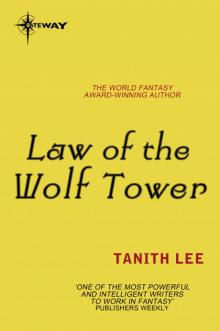 Law of the Wolf Tower: The Claidi Journals Book 1
Law of the Wolf Tower: The Claidi Journals Book 1 Don’t Bite the Sun
Don’t Bite the Sun Tanith By Choice: The Best of Tanith Lee
Tanith By Choice: The Best of Tanith Lee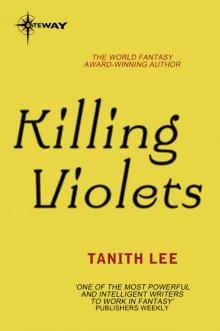 Killing Violets
Killing Violets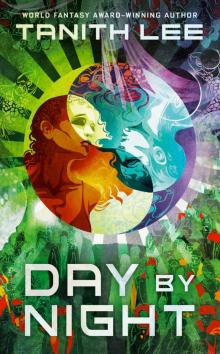 Day by Night
Day by Night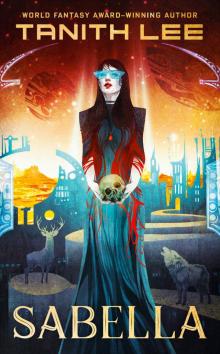 Sabella
Sabella Blood 20
Blood 20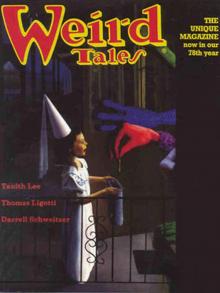 Weird Tales #325
Weird Tales #325 Greyglass
Greyglass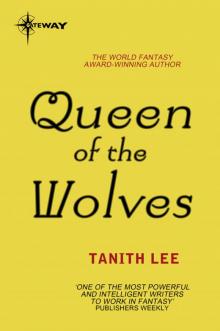 Queen of the Wolves
Queen of the Wolves To Indigo
To Indigo Ghosteria Volume 2: The Novel: Zircons May Be Mistaken
Ghosteria Volume 2: The Novel: Zircons May Be Mistaken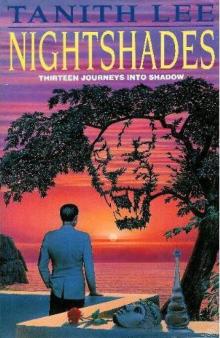 Nightshades
Nightshades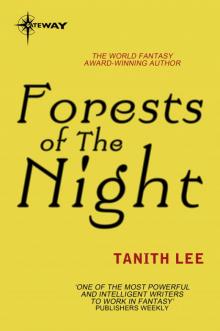 Forests of the Night
Forests of the Night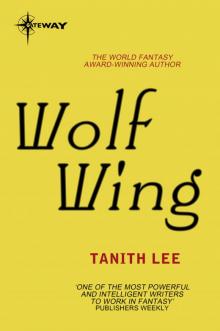 Wolf Wing
Wolf Wing Ghosteria Volume 1: The Stories (Ghostgeria)
Ghosteria Volume 1: The Stories (Ghostgeria) Obsidian: A Decade of Horror Stories by Women
Obsidian: A Decade of Horror Stories by Women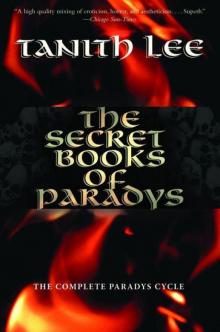 The Secret Book of Paradys
The Secret Book of Paradys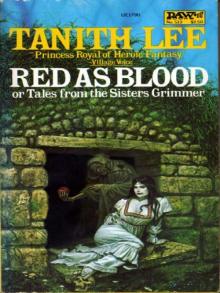 Red as Blood: or tales from the Sisters Grimmer
Red as Blood: or tales from the Sisters Grimmer The Book of the Damned
The Book of the Damned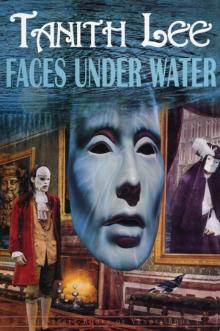 Faces Under Water
Faces Under Water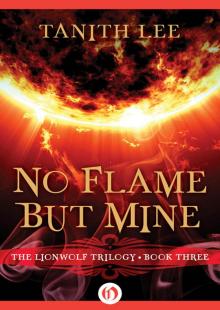 No Flame But Mine
No Flame But Mine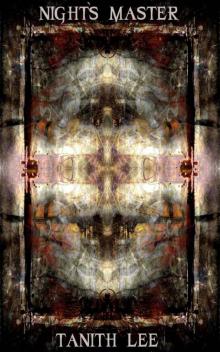 Night's Master
Night's Master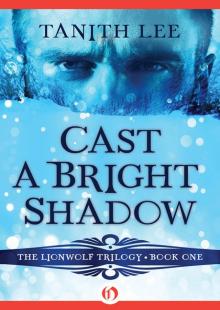 Cast a Bright Shadow
Cast a Bright Shadow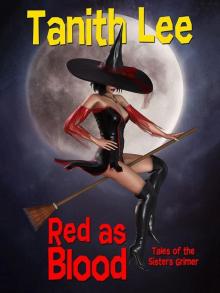 Red as Blood, or Tales from the Sisters Grimmer: Expanded Edition
Red as Blood, or Tales from the Sisters Grimmer: Expanded Edition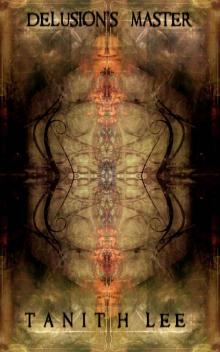 Delusion's Master (Tales From the Flat Earth)
Delusion's Master (Tales From the Flat Earth)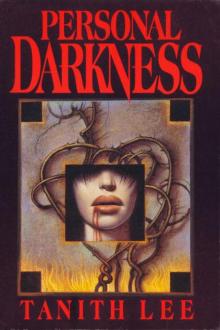 Personal Darkness
Personal Darkness The Silver Metal Lover
The Silver Metal Lover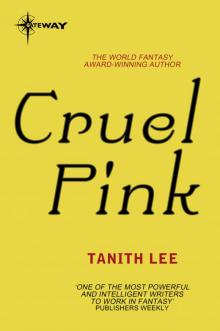 Cruel Pink
Cruel Pink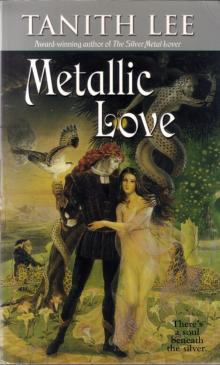 Metallic Love
Metallic Love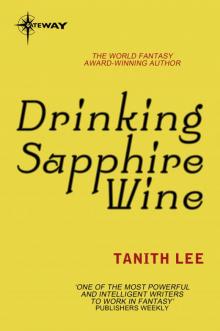 Drinking Sapphire Wine
Drinking Sapphire Wine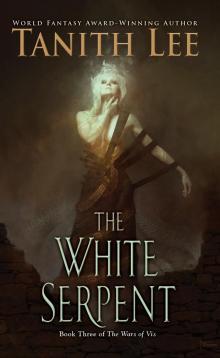 The White Serpent
The White Serpent Louisa the Poisoner
Louisa the Poisoner Don't Bite the Sun (Four-BEE Book 1)
Don't Bite the Sun (Four-BEE Book 1) Turquoiselle
Turquoiselle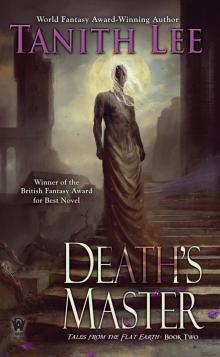 Death's Master
Death's Master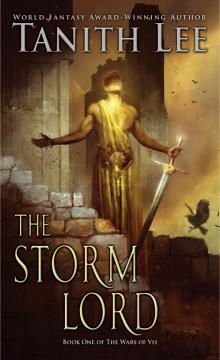 The Storm Lord
The Storm Lord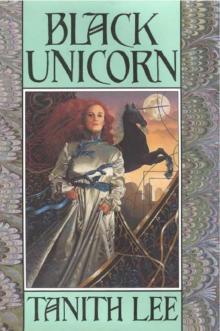 Black Unicorn (Dragonflight)
Black Unicorn (Dragonflight)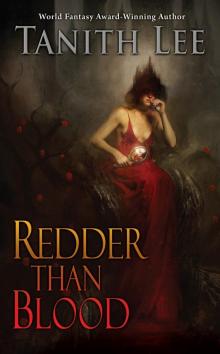 Redder than Blood
Redder than Blood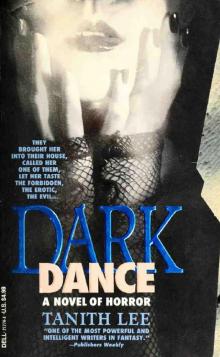 Dark Dance
Dark Dance Ivoria
Ivoria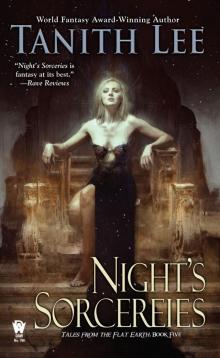 Night's Sorceries
Night's Sorceries Venus Preserved (Secret Books of Venus Series)
Venus Preserved (Secret Books of Venus Series)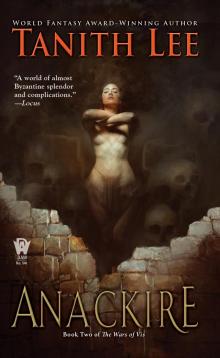 Anackire
Anackire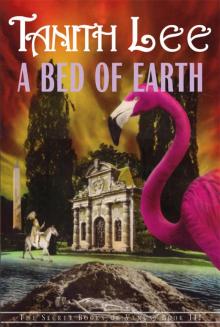 A Bed of Earth
A Bed of Earth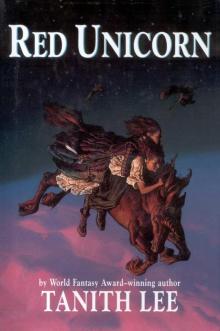 Red Unicorn
Red Unicorn Here in Cold Hell
Here in Cold Hell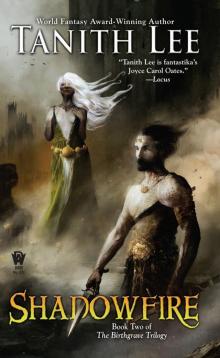 Shadowfire
Shadowfire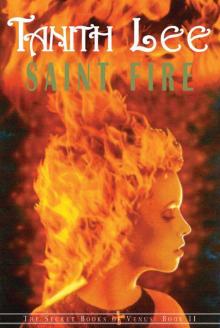 Saint Fire (Secret Books of Venus Series)
Saint Fire (Secret Books of Venus Series)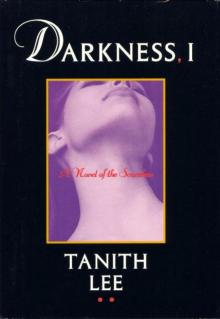 Darkness, I
Darkness, I Death Dances
Death Dances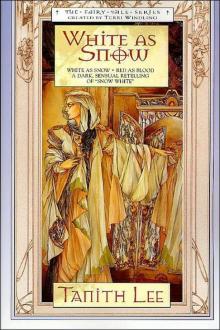 White As Snow (Fairy Tale)
White As Snow (Fairy Tale) Space Is Just a Starry Night
Space Is Just a Starry Night Biting the Sun
Biting the Sun Hunting the White Witch
Hunting the White Witch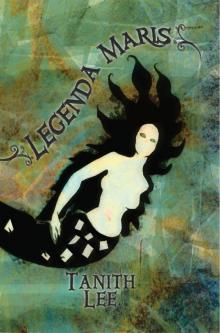 Legenda Maris
Legenda Maris Kill the Dead
Kill the Dead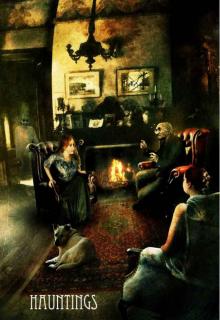 Hauntings
Hauntings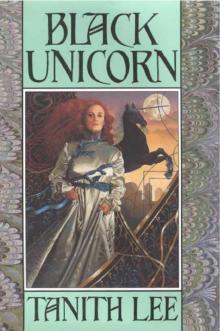 Black Unicorn
Black Unicorn Law of the Wolf Tower
Law of the Wolf Tower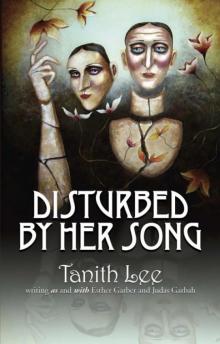 Disturbed by Her Song
Disturbed by Her Song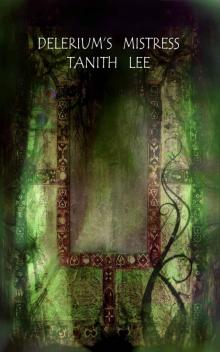 Delerium's Mistress: Tales of the Flat Earth Book 4
Delerium's Mistress: Tales of the Flat Earth Book 4 Mortal Suns
Mortal Suns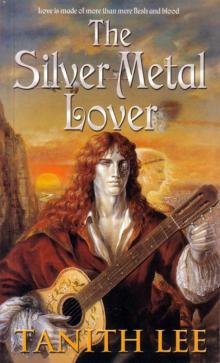 The Silver Metal Lover s-1
The Silver Metal Lover s-1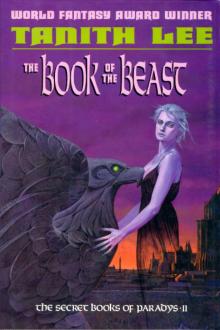 The Book of the Beast
The Book of the Beast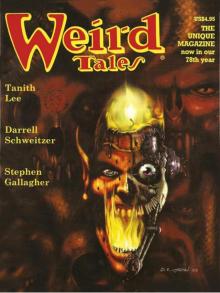 Weird Tales #327
Weird Tales #327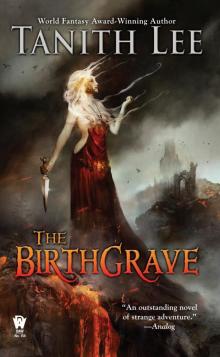 The Birthgrave
The Birthgrave